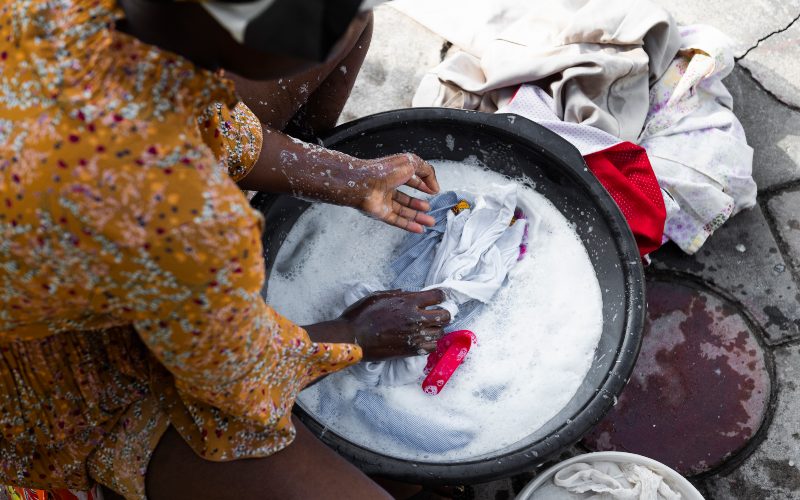Dining in the dark: A journey of taste, empathy and self-discovery

Globally, dark dining has evolved into a powerful tool for inclusion, education, and charity. Proceeds from such dinners often support visually impaired communities.
Imagine stepping into a restaurant where you cannot see a single thing, not the menu, not your plate, not even the person sitting across from you.
The only guide is the soft voice of a waiter trained to navigate the dark.
More To Read
It sounds strange, even risky. How do you eat without seeing your food? Yet around the world, this has become one of the most intriguing culinary experiences of the last two decades.
Dining in the Dark is a global movement that transforms one of our most ordinary habits, eating, into an act of discovery, vulnerability, and empathy.
Where it all began
The concept of dining in complete darkness originated in Zurich, Switzerland, in 1999.
A blind pastor named Jorge Spielmann used to serve meals to his guests in total darkness to help them understand what it is like to eat without sight.
The experiment was both humbling and revelatory. His sighted friends described food tasting more intense, textures more pronounced, and conversations more sincere.
The idea caught the attention of restaurateurs and social entrepreneurs who saw potential in combining gastronomy with social impact.
In 2004, the first permanent dark restaurant, Blindekuh (“blind cow”), opened in Zurich.
Around the same time, French entrepreneur Edouard de Broglie launched Dans le Noir? (“in the dark?”) in Paris.
At Dans le Noir?, guests are guided and served entirely by blind or visually impaired staff.
The mission is twofold: to heighten the dining experience and to challenge societal perceptions of disability. The restaurant became an instant hit, leading to franchises in London, Madrid, Dubai, and New York.
The philosophy behind the darkness
Dining in the dark is not about novelty or theatrics. It’s about perception, the idea that when sight is removed, your other senses awaken.
Other Topics To Read
Without visual cues, diners rely on smell, touch, taste, and sound to navigate their plates.
A simple dish becomes an adventure: Is that chicken or fish? Are those strawberries or tomatoes? Every bite demands attention. You want to know: What is this that I’ve just tasted?
Textures become more vivid. Flavours are more intense. It’s also a profound social experiment. In darkness, appearances vanish. Conversations flow more naturally. People listen more closely, laugh more freely, and often connect more deeply than they would in the light.
For the visually impaired staff who guide the experience, the dark is empowering. It’s the one space where their lack of sight becomes their greatest strength.
How it works
A typical Dining in the Dark experience follows a carefully choreographed process designed to immerse and safely disorient diners.
Arrival and briefing: Guests arrive in a well-lit lounge, hand over phones, watches, or anything that emits light. They choose their meal “type” (meat, seafood, or vegetarian), but not the actual dishes. The mystery is part of the fun.
Guided entry: Visually impaired waiters, trained in mobility and table service, lead diners, often in a single line with hands on each other’s shoulders, into the pitch-black dining room.
Seated in the dark: Once seated, diners orient themselves by touch. They get familiar with the cutlery, glass, and plate, which often feel oddly unfamiliar when unseen.
The meal: Courses are served silently or with soft guidance. Many diners struggle at first, fumbling with utensils or spilling drinks, but as the meal progresses, their confidence grows.
The reveal: After dessert, diners are led back to the light, where they finally see what they’ve eaten. The moment is often met with surprise, laughter, and reflection.
The entire experience typically lasts about 90 minutes, though its impact lingers far longer.
Kenya joins the movement
Kenya joined the global dark-dining trend more recently, but it has already made an impression.
On September 27, 2025, the Karen Country Club hosted a Dining in the Dark, where dozens of guests were blindfolded and guided by visually impaired servers. Tickets were priced at Sh 6,500 for members, Sh 7,500 for guests, and Sh3,000 for Karenites.
Organised in collaboration with the Kenya Society for the Blind, the event aimed to raise awareness and funds for visual impairment support programs.
Earlier, in August 2024, the Grand Royal Swiss Hotel in Kisumu held a similar dinner, inviting guests to “see through taste”.
Diners were served a three-course meal while completely blindfolded, an experience many described as humbling, emotional, and unforgettable.
What began as a social experiment abroad has found special resonance in Kenya, where inclusion and social awareness are becoming central to the hospitality industry.
A return to presence
In an era of food photography and Instagram aesthetics, dining in darkness offers the exact opposite: a return to simplicity and presence.
It’s less about how the meal looks and more about how it feels and tastes.
“It forces you to slow down,” says event coordinator Lydia Karanja, who helped organise the Karen event. “You stop judging food by how pretty it is and start listening to your senses. The conversations become real, the laughter genuine.”
For many Kenyans, it’s also an exercise in empathy, an attempt to understand what life is like without sight, even if only for an evening.
Globally, dark dining has evolved into a powerful tool for inclusion, education, and charity. Proceeds from such dinners often support visually impaired communities.
In Kenya, organisers hope to make it a recurring feature, rotating between hotels and cities to reach more diners.
Top Stories Today













































